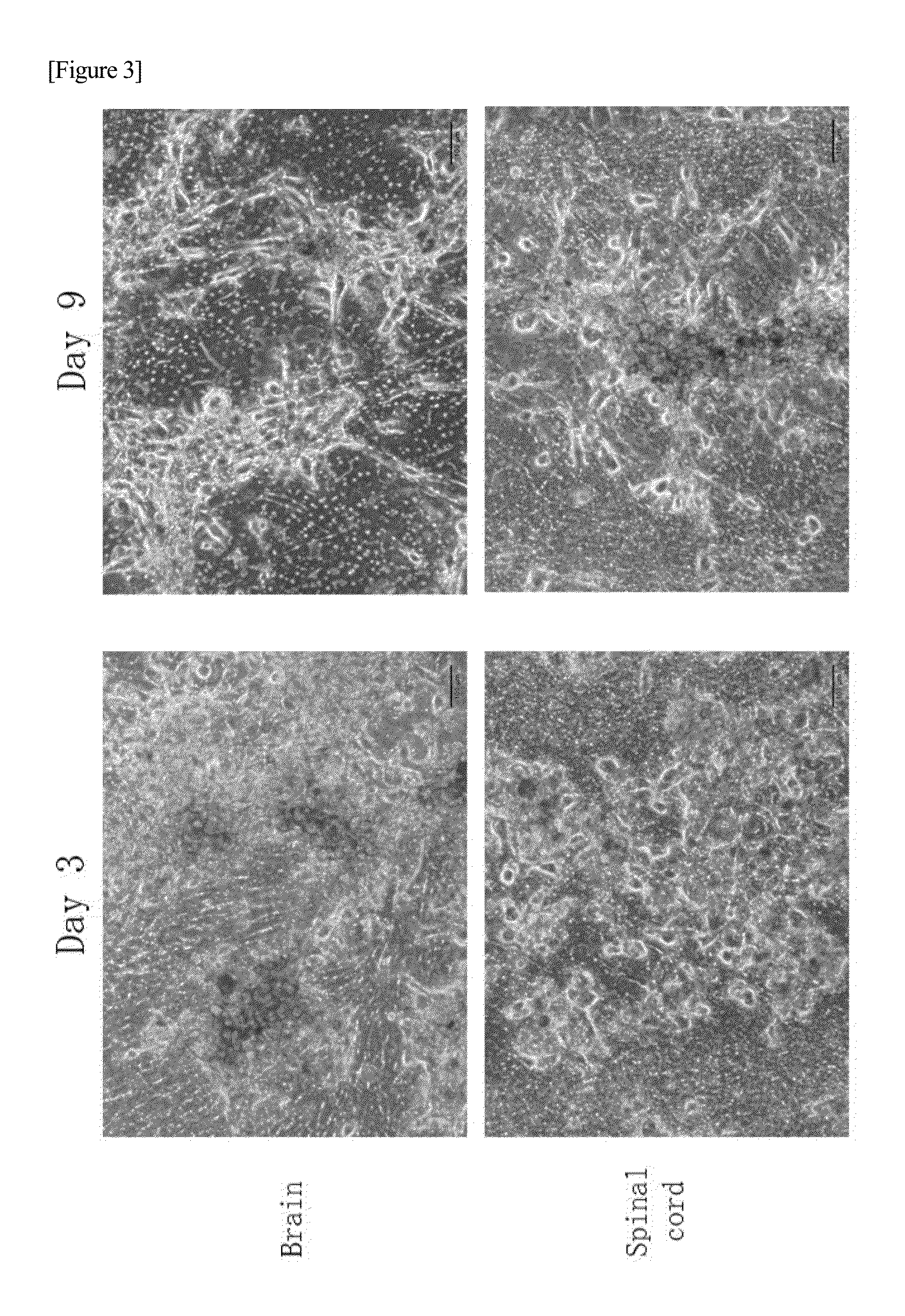Method for inducing differentiation of induced pluripotent stem cells and method for selecting the same
a technology differentiation methods, which is applied in the field of inducing differentiation of a method for selecting induced pluripotent stem cells, can solve the problems of evaluating and/or controlling the quality of ips cells, and achieve high differentiation induction efficiency and efficient induction of ips cells
- Summary
- Abstract
- Description
- Claims
- Application Information
AI Technical Summary
Benefits of technology
Problems solved by technology
Method used
Image
Examples
examples
(1) Production of Frozen Section
[0061]Normal liver, brain and spinal cord were excised from a 6-week-old male ICR mouse. In addition, 1 mg / kg carbon tetrachloride that had been mixed with olive oil at a mixing ratio of 1:4 was intraperitoneally administered to ICR mice, so that drug-induced hepatitis was artificially developed in the mice. From these ICR mice, on 1, 2, 3 and 5 days after administration of carbon tetrachloride, hepatitis liver was excised.
[0062]Each organ was embedded and mounted in Tissue-TekR (Sakura Finethechnical) that was an OCT compound, and it was then immersed in liquid nitrogen to produce a block for production of a frozen section. From each of these blocks, a frozen section with a thickness of 6 μm was produced, and was then placed on a circular culture cover glass (poly L lysine-coated type, Matsunami Glass Ind., Ltd.). After drying, it was washed with a phosphate buffer (Phosphate Buffered Saline; hereinafter abbreviated as “PBS”; pH 7.4) twice to wash th...
PUM
| Property | Measurement | Unit |
|---|---|---|
| Structure | aaaaa | aaaaa |
| Efficiency | aaaaa | aaaaa |
Abstract
Description
Claims
Application Information
 Login to View More
Login to View More - R&D
- Intellectual Property
- Life Sciences
- Materials
- Tech Scout
- Unparalleled Data Quality
- Higher Quality Content
- 60% Fewer Hallucinations
Browse by: Latest US Patents, China's latest patents, Technical Efficacy Thesaurus, Application Domain, Technology Topic, Popular Technical Reports.
© 2025 PatSnap. All rights reserved.Legal|Privacy policy|Modern Slavery Act Transparency Statement|Sitemap|About US| Contact US: help@patsnap.com



